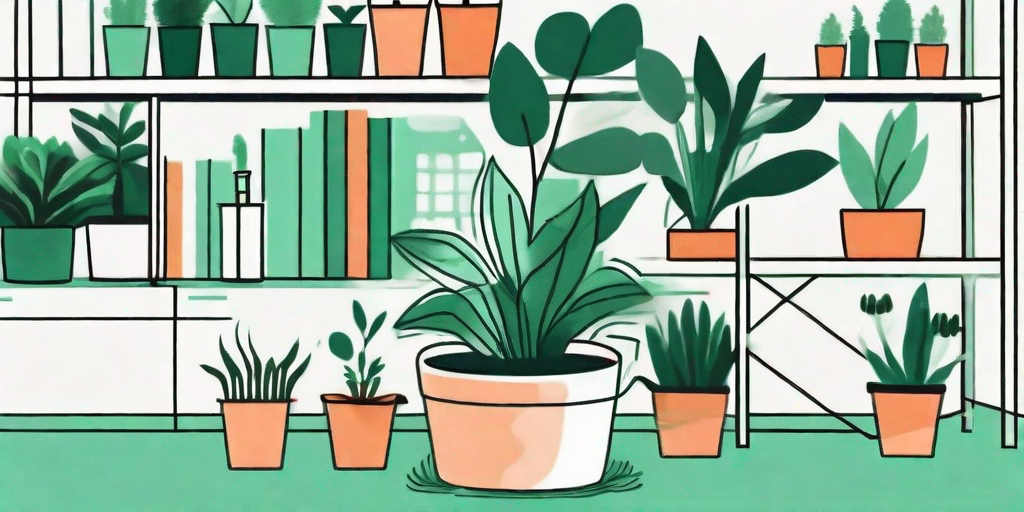
The world of oversized greenery is a jungle, both literally and metaphorically. But don't fret, we're here to guide you through the wilderness. Whether your beloved Monstera has outgrown its pot, or your Fiddle Leaf Fig is yearning for more room to stretch its roots, this guide will help you navigate the art of repotting.
Understanding the Need for Repotting
Before we dive into the nitty-gritty of repotting, it's crucial to understand why it's necessary. Plants are not just decorative pieces; they're living, breathing entities that grow and change over time. Just as you wouldn't want to wear the same pair of shoes for years on end, your plant doesn't want to be stuck in the same pot forever.
Repotting is not just about giving your plant more space. It's also about replenishing the soil, which can become depleted of nutrients over time. So, even if your plant isn't bursting out of its pot, it might still benefit from a fresh batch of soil.
Signs Your Plant Needs Repotting
Plants have a subtle way of telling us what they need. If your plant is showing any of the following signs, it might be time for a pot upgrade:
- Roots are growing out of the drainage holes
- Plant is top-heavy and keeps tipping over
- Water runs straight through the pot
- Plant is growing slower than usual
Choosing the Right Pot
Choosing a new pot for your plant is like shopping for a new home. It needs to be the right size, have good drainage, and of course, it has to look good. After all, your plant deserves to live in style.
When it comes to size, a common mistake is to choose a pot that's too large. While it's tempting to give your plant plenty of room to grow, a pot that's too big can lead to overwatering. As a rule of thumb, choose a pot that's about 2 inches larger in diameter than the current one.
Material Matters
The material of the pot can also make a big difference. Plastic pots are lightweight and affordable, but they can also retain more water. On the other hand, terracotta pots are porous, which allows for better air circulation and water evaporation. However, they can also dry out faster, so you might need to water your plant more often.
Ultimately, the best material for your pot depends on the needs of your plant. Some plants prefer to stay moist, while others like to dry out between waterings. Do some research on your specific plant to find out what it prefers.
The Repotting Process
Now that we've covered the basics, it's time to roll up your sleeves and get your hands dirty. Repotting might seem like a daunting task, but with the right tools and a bit of patience, you'll be a potting pro in no time.
Here's a step-by-step guide to repotting your oversized greenery:
- Prepare your workspace: Lay down some newspaper or a tarp to catch any spills.
- Remove the plant from its current pot: Tilt the pot sideways, hold the plant by its base, and gently pull it out.
- Prune the roots: If the roots are circling around the bottom of the pot, gently tease them apart. You can also trim any dead or overly long roots.
- Place the plant in the new pot: Add some fresh potting soil to the bottom of the pot, then place the plant in the center. The top of the root ball should be about 1 inch below the rim of the pot.
- Fill the pot with soil: Add more soil around the sides, pressing it down gently to remove any air pockets.
- Water the plant: Give your plant a good drink to help it settle into its new home.
Post-Repotting Care
After repotting, your plant might need some extra TLC. It's normal for plants to experience a bit of shock after being moved, so don't be alarmed if it looks a bit droopy for a few days.
Keep the plant in a shady spot for a week or so to help it recover. Avoid fertilizing right away, as the fresh soil should have enough nutrients. After a few weeks, you can start to gradually reintroduce the plant to its usual light conditions.
Frequently Asked Questions
How often should I repot my plant?
Most houseplants need to be repotted every 1-2 years. However, some slow-growing plants can stay in the same pot for longer. Always look for signs that your plant is outgrowing its pot, such as roots growing out of the drainage holes.
What's the best time of year to repot?
Spring is the best time to repot, as this is when most plants start their growth cycle. However, if your plant is showing signs of distress, it's better to repot sooner rather than later.
Can I repot a plant that's in bloom?
It's best to avoid repotting plants when they're in bloom, as the process can cause the flowers to drop. Wait until the blooming period is over before you repot.
Conclusion
Repotting your oversized greenery might seem like a Herculean task, but with a bit of knowledge and the right tools, it can be a rewarding experience. Not only will your plant thank you for it, but you'll also get the satisfaction of knowing you've helped a living thing thrive. So don't be afraid to get your hands dirty and give your plant the home it deserves.















